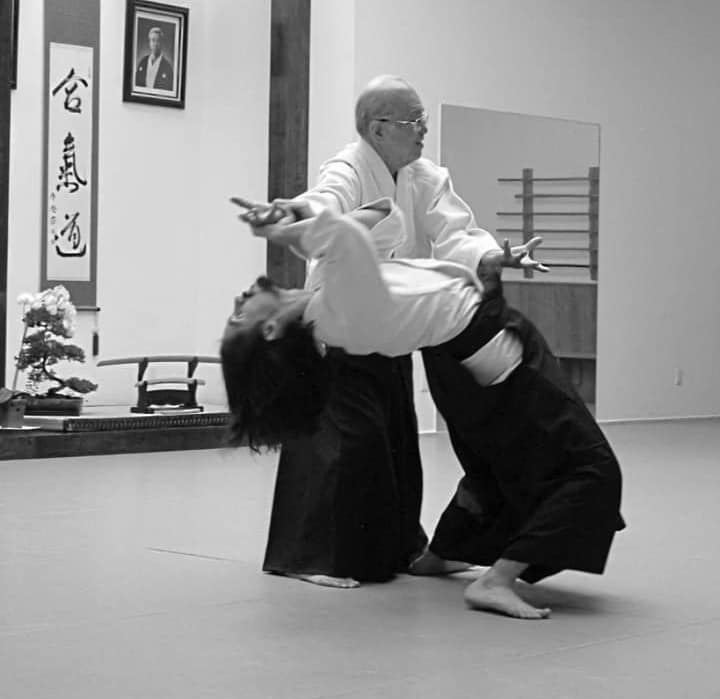What would that mean? Strike with the hand?
Yes. Is katate uchi with both arms at the same time? Is yokomenuchi with both hands? You never question things like that or ask questions like that. O-Sensei says this or the book says that but no one ever questions what is said. Which one is right? Many people are confused about these things. Why is there confusion? Because they never understood it properly. Shomen is this way, from the top of the head in an arc downwards, not from the front of the face forwards.
Maybe people get their ideas from boxing. A straight punch to the face. Sometimes students think they can be more realistic by making it more of a punch.
That is just muscle work. Shomenuchi is not just muscle work. (He grabs one wrist and strikes.) On the left side you must control by holding, and on the right side you must control by striking. Since no one studies this, how do you know if that is correct or not?
Today We were doing a warm-up like karate but Aikido is not that way. O-Sensei said “we don’t know any karate”. Tsuki, for example. Kanai Sensei does it this way. O-Sensei did it differently. Does it mean that O-Sensei was lying when he said there is no karate in Aikido or was Kanai Sensei lying when he said punch this way?
O-Sensei did only Aikido.Aikido is not against karate or against judo. Aikido is Aikido. Aikido’s tsuki is called furi komi, a strike diagonally up. It comes from not the open hand strike but rather like having a tanto in your hand and striking upward.

More a thrusting motion than punching motion?
It’s very different than that. Many people don’t know that O-Sensei taught furi komi tsuki. That’s why everyone teaches punching straight like karate’s tsuki. Therefore Aikido is being taught against karate’s strikes.
Did O-Sensei Sensei teach that?
Koichi Tohei Sensei and others taught the karate tsuki. So who is correct, who is telling the truth, and who is telling a lie? If furi komi fails it turns into shomenuchi, but if a straight strike fails what does it turn into? It becomes two directions of a cutting motion.
The raising part is a little bit larger and it turns into tsuki. So that seems far more reasonable as a way to attack. Besides from a physical point of view which one is better, a straight strike or a strike angling up, from a purely mechanical point of view? Because people don’t study physics or mechanics people just say “Aikido is this way, a straight strike” but that is not true.
So what should I write if I write a book? That my friend Kanai Sensei says, “do it this way?” Or my friend Yamada Sensei says, “do it this way?” Or that my friend Chiba Sensei says, “do it this way?” If they are all contradictory, what can I write?
To be continued…



